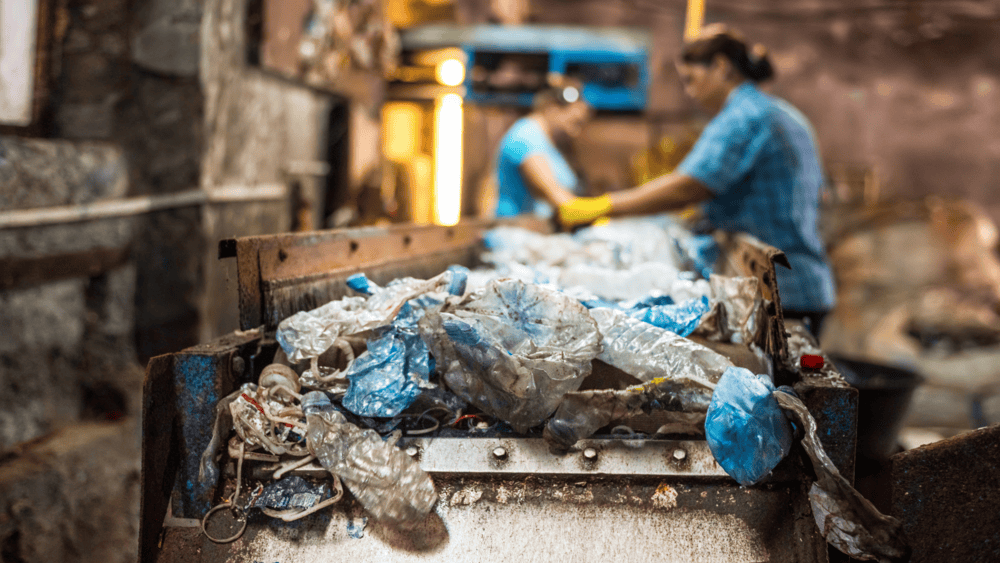Waste Not Want Not
On his seven hour journey in February this year from Moscow to the Russian town of Rybinsk on the Volga River Philip Malandrinos did not know if his headache was caused by the temperature of -16°C or the deafening noise made by the studded tyres of the aging Renault van on the iced road. Philip runs a medical waste incineration business in the Cape Town suburb of Delft and was on his way to inspect a Russian manufactured incinerator which uses a new clean burning technology based on the design of the jet engine. Medical waste is categorised as ‘dry waste’ and ‘wet waste’ and I will not elaborate on the latter other than to say that regulations governing the industry stipulate that the incinerated result has to be dumped at hermetically sealed sites.
Currently 90.1% of the 108 million tons of waste generated annually by South Africans goes to landfills. This presents a spectacular opportunity as highlighted by Deputy Minister of Environmental Affairs (DEA), Rejoice Mabudafhasi in her statement ‘ ..imperative for the country to introduce innovative approaches in dealing with waste particularly for diverting waste to other waste management options’.
The other waste management options to which she refers are essentially converting waste into energy. Anaerobic digestion, fermentation and composting are processes which convert food waste to energy as a gas or liquid fuel and plasma conversation turns solid waste into gas as was demonstrated in the movie ‘Back to the Future’ when Dr Emmett Brown shoves garbage into the flying car’s fuel tank. Technology has effectively revolutionised the sector by placing value on what was previously, well, rubbish.
South Africa is well on track to leverage this opportunity with enabling legislation and state allocated funding as well as research conducted by the CSIR which has resulted in a ten year Waste R&D and Innovation Roadmap (2102 to 2022). A Green Fund of R800m to support the implementation of innovative waste management solutions was established by the Development Bank of SA in 2012 which is partly financed by the World Bank Clean Technology Fund.
The industry has had historical difficulties with poor management of municipal landfill sites and claims that the environmental regulation authorities tend to focus their attention on private operators while ignoring the errant municipal sites. South Africa generates 45000 tonnes annually of medical waste and tender irregularities at state hospitals resulted in the illegal storage and dumping of some of this waste four to five years ago which is still being prosecuted.
The sector provides informal employment to ‘reclaimers or waste pickers’ which are identified in two categories ‘LWPs’ who operate at landfill sites and ‘SWP’s who collect waste in the suburbs. The LWPs particularly are exposed to considerable health and safety risks and a number of initiatives including the Department of Science and Technologies report on Current and Required Institutional Mechanisms to Support Waste Management innovation seeks to develop SMME ‘s in the sector in a sustainable manner. The JHB metro has introduced centralised sorting facilities at landfills to remove LWPs from the tip face and is looking at providing reflective clothing and better trolleys to SWPs for improved road safety.
The potential to create jobs has been recognised by the DEA with the National Waste Management Strategy which plans to create 69 000 new jobs and 2 600 additional SMME’s in the sector by 2016 and The Youth Jobs in Waste programme has created 3 577 youth jobs in the waste management function within municipalities.
While waste management creates opportunities for SMME’s it is also increasingly becoming a key strategy for formal sector companies. Woolworths was one of first South African companies to appoint a sustainability committee which manages their environmental sustainability policies. Suppliers are bound by Woolworths Code of Business Principles which minimises their use of natural resources and an example pf which is that suppliers are obliged to use nitrogen in their vehicle tyres. It is likely that in the near future a sustainability policy will be requirement for fund managers before including a company’s stock in their portfolios.
Philip Malindrinos’s Russian furnace is currently being assembled at his site in Delft.
The idiom ‘not afraid to get his hands dirty’ has never had more resonance.
• McGregor is MD of Who Owns Whom
Contact us to access WOW's quality research on African industries and business
Contact UsRelated Articles
BlogCountries South AfricaWater supply sewerage waste management and remediation activities
South Africa’s Solid Waste Crisis: Challenges and Opportunities
Contents [hide] Most of the approximately 125 million tonnes of solid waste generated in South Africa annually ends up in landfill sites. This should be of concern to all the...
BlogCountries South AfricaWater supply sewerage waste management and remediation activities
Is South Africa’s water system still in crisis mode in 2024?
Contents [hide] South Africa has a water crisis that will continue for the next five years or longer if remedial measures planned are not fast-tracked and implemented timeously. Water availability...
BlogCountries Agriculture forestry and fishingElectricity gas steam and air conditioning supplySouth AfricaWater supply sewerage waste management and remediation activities
The Impact of Load shedding on Agriculture in South Africa
Food security is one of the strategic inputs and essential elements of policy development and on the first level on Maslow’s hierarchy of needs. Agribusiness is big business for governments...





